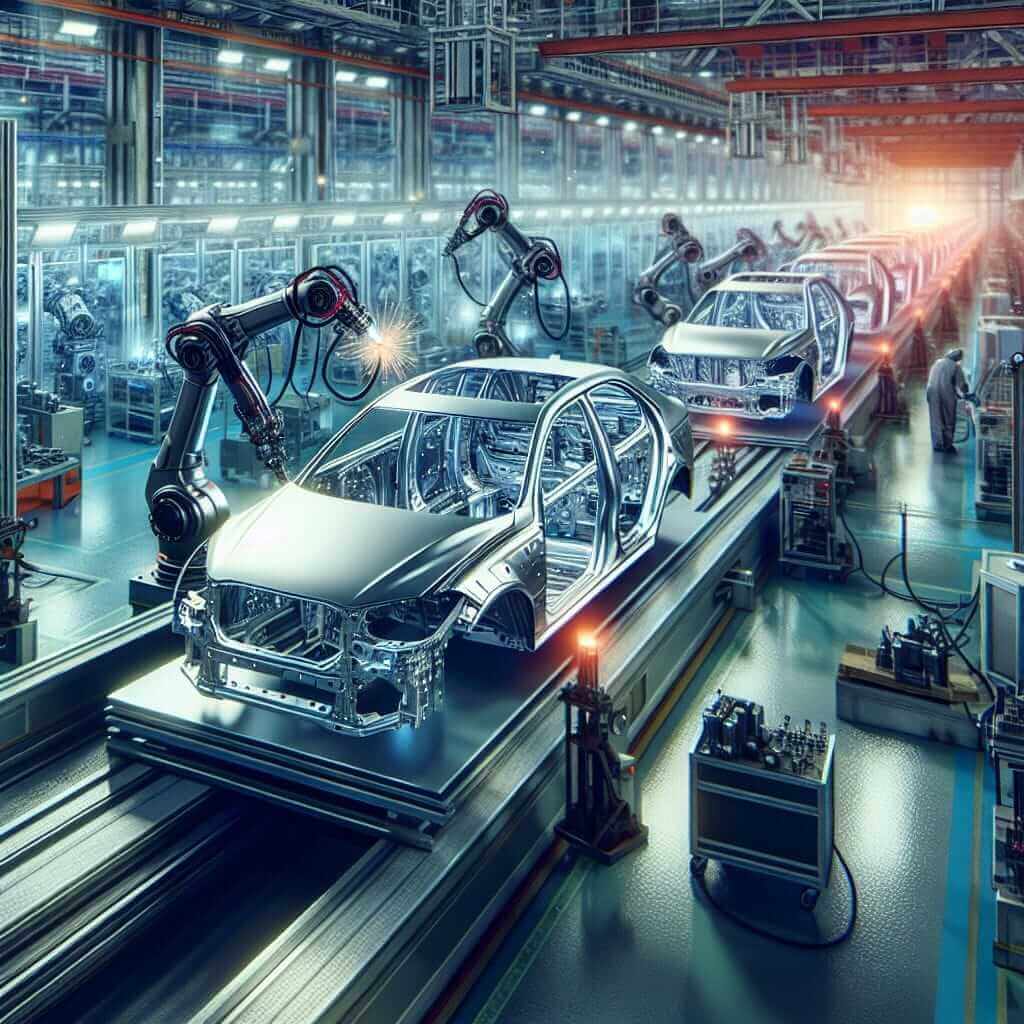The impact of technological innovation on job creation is a hot-button issue frequently appearing in IELTS Writing Task 2. This topic often requires examinees to analyze both the positive and negative facets of technology’s influence on employment.
This article provides a comprehensive guide to crafting a high-scoring essay on this topic, including:
- Sample IELTS Writing Task 2 questions
- A band 8 essay example
- Key vocabulary and grammar tips
- Further practice questions
Sample IELTS Writing Task 2 Questions
Here are some potential IELTS questions related to technological innovation and job creation:
- Many people believe that technological innovation will ultimately lead to widespread job losses. To what extent do you agree or disagree?
- Technological advancements are rapidly changing the job market. What are the main challenges and opportunities this presents for workers?
- Some argue that governments should invest heavily in retraining programs to prepare citizens for jobs of the future. Others believe individuals are responsible for adapting to the changing job market. Discuss both views and give your opinion.
Sample Essay:
Question:
Many people believe that technological innovation will ultimately lead to widespread job losses. To what extent do you agree or disagree?
Essay:
Technological innovation has become an integral part of modern society, driving progress and reshaping industries at an unprecedented pace. While some argue that this technological revolution will inevitably lead to widespread job losses, I believe that such concerns are often overstated. This essay will argue that although technological advancements may displace certain jobs, they simultaneously create new opportunities and enhance overall employment prospects.
On the one hand, it is undeniable that technological advancements, particularly in automation and artificial intelligence, are automating tasks previously performed by humans. This has led to job displacement in sectors like manufacturing, where robots and automated systems are replacing manual labor. For instance, car manufacturing plants now heavily rely on robotic arms for assembly lines, significantly reducing the need for human workers. This trend can lead to unemployment, particularly for low-skilled workers who may find it challenging to adapt to the evolving job market.

However, it is crucial to acknowledge that technological innovation is not solely a harbinger of job losses. In fact, history has shown that technological advancements often create more jobs than they displace. The rise of the internet, for example, initially sparked fears of widespread unemployment. However, it subsequently led to the creation of countless new industries and job roles in areas such as e-commerce, software development, and digital marketing. Similarly, the development of artificial intelligence is not only automating existing tasks but also creating new opportunities in fields like data science, machine learning, and AI engineering.
Moreover, technological innovation can enhance productivity, efficiency, and economic growth, ultimately leading to the creation of more jobs across various sectors. By automating repetitive tasks, technology frees up human workers to focus on more complex, creative, and higher-value tasks. This shift towards higher-skilled jobs can lead to increased wages, improved working conditions, and a higher standard of living for the workforce. Furthermore, the economic growth spurred by technological advancements often translates into increased demand for goods and services, further stimulating job creation in related industries.
In conclusion, while it is true that technological advancements can lead to job displacement in specific sectors, it is myopic to view technological innovation as solely a threat to employment. History has repeatedly demonstrated that technological progress is a catalyst for job creation, economic growth, and societal advancement. By embracing innovation, investing in education and training programs, and fostering a flexible and adaptable workforce, we can harness the power of technology to create a future with abundant and fulfilling job opportunities for all. (Word Count: 348 words)
Notes for Writing
- Structure: The essay follows a balanced approach, acknowledging both sides of the argument before presenting a clear stance.
- Vocabulary: The essay uses a range of vocabulary related to technology and employment, including “automation,” “artificial intelligence,” “job displacement,” “evolving job market,” and “economic growth.”
- Grammar: The essay demonstrates a good command of grammar, using complex sentence structures and a variety of grammatical structures correctly.
Difficult Vocabulary
- Harbinger (noun): a person or thing that announces or signals the approach of another. (Pronunciation: /ˈhɑːrbɪndʒər/)
- Myopic (adjective): lacking foresight or intellectual insight. (Pronunciation: /maɪˈɒpɪk/)
- Catalyst (noun): a person or thing that precipitates an event. (Pronunciation: /ˈkætəlɪst/)
- Unprecedented (adjective): never done or known before. (Pronunciation: /ʌnˈprɛsɪdɛntɪd/)
- Integral (adjective): necessary to make a whole complete; essential or fundamental. (Pronunciation: /ɪnˈtɛɡrəl/)
Conclusion
This article explored the impact of technological innovation on job creation, a common IELTS Writing Task 2 theme. Remember to practice analyzing essay prompts, structuring your responses effectively, and incorporating relevant vocabulary and grammar to achieve a high band score. Good luck with your IELTS preparation!